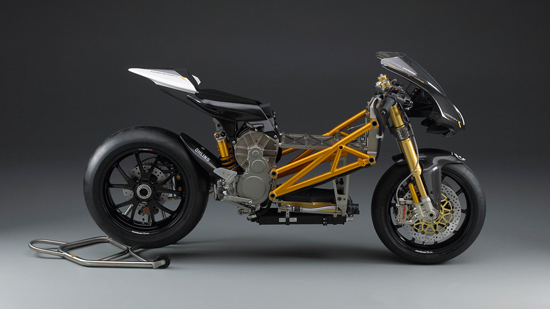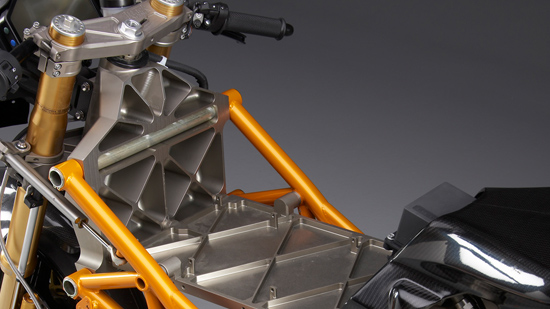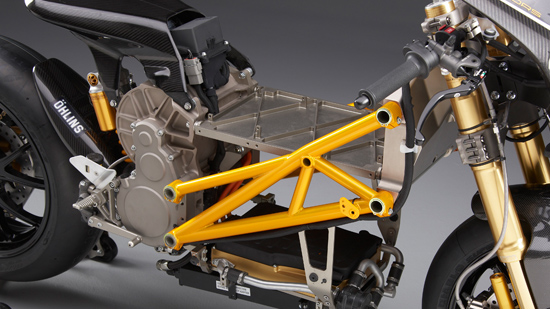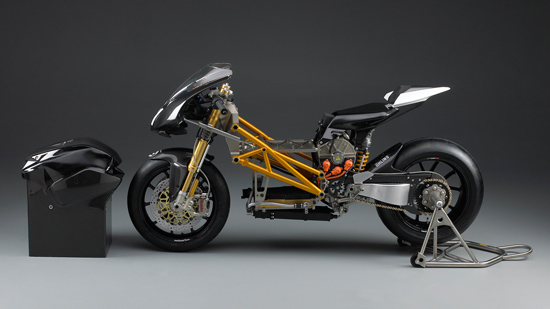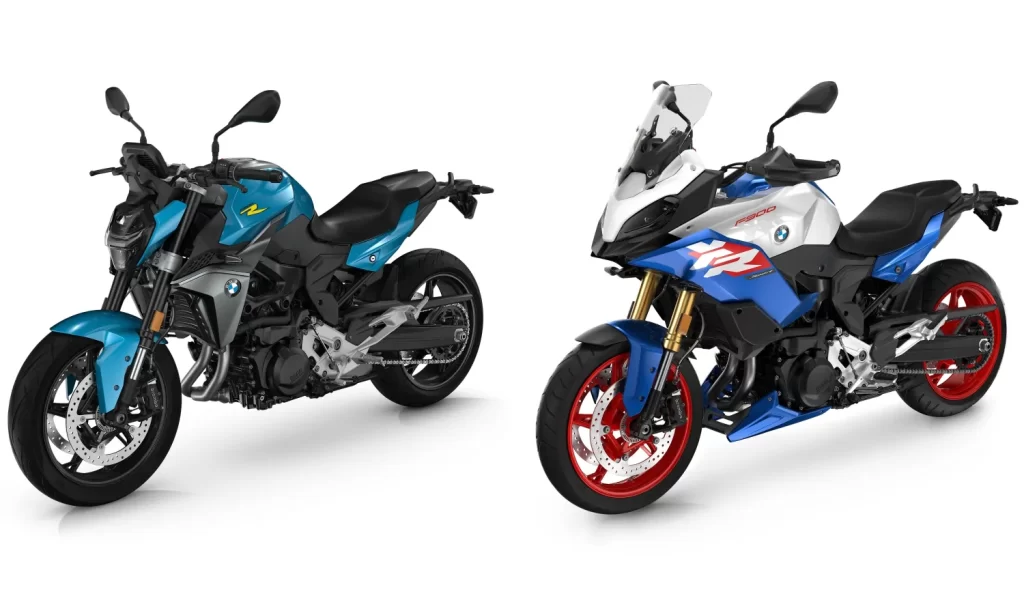I found the article from Mission Motors about their bike, the Mission R, is very interesting. The chassis design explanation by James Parker, the expert in chassis design, valid for any bike not just for electric bikes as being written in the article below. Check it out after the jump
One of the things that is extraordinary about the Mission R is that we were able to package an incredible 141 HP MissionEVT powertrain, and a 14 kWhr MissionEVT battery pack into a package smaller than a 600-cc sportbike. How can all that be packaged into the superbike chassis?
For those of you who follow electric motorcycles, you know that this was no simple feat. To succeed at this challenging task, Mission enlisted the chassis design expertise of James Parker, one of the world’s most talented and creative motorcycle chassis designers.
For today’s blog post, we wanted to let James talk about what made designing the Mission R chassis such a unique challenge, and how he succeeded in setting what we believe is the new standard in electric motorcycle design:
James Parker on the Mission R chassis design:
Any motorcycle chassis design combines three basic design elements into a cohesive whole. The three elements are: components, geometries, and packages.
“Components” are the basic parts of the bike: Motor, frame, suspension, wheels, brakes, bars, footpegs, and more.
“Geometries” are the spatial relationships, measurements and paths of motion of the parts: Rake, trail, wheelbase, wheel travel, center of gravity, and a lot more.
“Packages” are the spaces components and geometries have to fit within: The lean-angle package that lets the motorcycle corner at speed, the ergonomic package that gives the rider a place to operate effectively, the aerodynamic package that keeps the rider and motorcycle parts out of the airstream, and the assembly and servicing package that gives mechanics access to every necessary part and fastener.
In designing an electric motorcycle, geometries and packages need to be very much analogous to those in a ‘conventional’ motorcycle, but the components are very different. Since the electric components need to work with, and fit within relatively conventional geometries and packages, there is a lot of re-thinking to do.
The Mission R chassis uses unique components to achieve the geometry and packaging demands of a high-performance motorcycle. The battery is a large box surrounded on four sides by three different structure types. At the front, a machined aluminum box serves as the steering head/fork mount and spans the full width of the battery. At the rear, the fully stressed “power unit” contains the motor, primary drive, and countershaft as well as the pivot for the swing arm.
On each side of the battery, connecting the steering head box and the power unit, are chrome-moly steel trellis sections. The battery is thus surrounded by protective structure to insure maximum safety. An aluminum plate that is integral to the battery serves as a further chassis element, providing longitudinal and lateral bracing to the 4-sided structure. In the stripped bike photos we’ve left a battery plate in place to show the structural connections clearly. In actual use the entire battery, including the battery plate, is installed or removed as a unit, lifting from above.
The power unit has several structural functions: As well as a mounting for the swingarm pivot and the trellis sections, the power unit provides mounting points for the rear suspension linkage rocker on its bottom surface, and on the upper radius, provisions for the structural carbon-fiber seat base and the attached upper shock mount.
The single-sided swingarm, machined from billet aluminum, has a unique linear telescoping, rather than eccentric (as on other single-sided designs) chain adjustment, which allows adjustment without altering ride height.
The Mission R’s electrical and structural components work with superbike geometries and packaging requirements to reveal a unique approach to designing a high-performance electric motorcycle. We’ve achieved a compact, mass-centralized design that uses new approaches to the problems of chassis design in harmony with new energy sources and new drive systems.
via: http://ridemission.com/blog/page/3/



